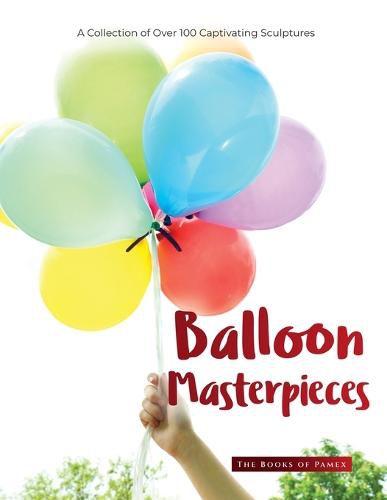Readings Newsletter
Become a Readings Member to make your shopping experience even easier.
Sign in or sign up for free!
You’re not far away from qualifying for FREE standard shipping within Australia
You’ve qualified for FREE standard shipping within Australia
The cart is loading…






This title is printed to order. This book may have been self-published. If so, we cannot guarantee the quality of the content. In the main most books will have gone through the editing process however some may not. We therefore suggest that you be aware of this before ordering this book. If in doubt check either the author or publisher’s details as we are unable to accept any returns unless they are faulty. Please contact us if you have any questions.
One of the first questions a bystander might ask a balloon artist is "Are they special balloons?" The answer is "Yes and no." Most balloons used for sculpting are made out of a type of rubber called latex. The quality of the latex may vary between manufacturers, but basically all latex balloons have the same stretching and twisting properties. Though sculpting balloons are made of similar material, they are not all shaped the same. Different balloons are designed to expand to specific shapes and sizes when they are inflated. Some will be big and round; others will be small and round. Some will be long and skinny or short and fat. There is a variety of unusual, specific-shaped balloons that include hearts, bear heads, bee bodies, flowers, donuts, spirals, and caterpillars. There are even balloons that are designed to link end to end for various purposes and many that are produced with printed images or patterns. With so many styles of balloons available, it is important to know that it is the shape and size of the balloon, more than any other factor, that will dictate what you can do with it once you begin twisting. The long, skinny balloons known as animal, twisty, or pencil balloons are those designed specifically for sculpting; they come in various sizes depending on your creative needs. They are officially named with numbers that describe their width and length after they are inflated. The most commonly used balloon is the 260. The "2" refers to the width, which is approximately two inches in diameter, and the "60" refers to the length, which is approximately sixty inches, end to end. Most of the designs in this book require 260s, unless otherwise stated. In many cases, the 260 can be substituted with balloons of varying widths and lengths to create the same designs in smaller or larger scale.
$9.00 standard shipping within Australia
FREE standard shipping within Australia for orders over $100.00
Express & International shipping calculated at checkout
This title is printed to order. This book may have been self-published. If so, we cannot guarantee the quality of the content. In the main most books will have gone through the editing process however some may not. We therefore suggest that you be aware of this before ordering this book. If in doubt check either the author or publisher’s details as we are unable to accept any returns unless they are faulty. Please contact us if you have any questions.
One of the first questions a bystander might ask a balloon artist is "Are they special balloons?" The answer is "Yes and no." Most balloons used for sculpting are made out of a type of rubber called latex. The quality of the latex may vary between manufacturers, but basically all latex balloons have the same stretching and twisting properties. Though sculpting balloons are made of similar material, they are not all shaped the same. Different balloons are designed to expand to specific shapes and sizes when they are inflated. Some will be big and round; others will be small and round. Some will be long and skinny or short and fat. There is a variety of unusual, specific-shaped balloons that include hearts, bear heads, bee bodies, flowers, donuts, spirals, and caterpillars. There are even balloons that are designed to link end to end for various purposes and many that are produced with printed images or patterns. With so many styles of balloons available, it is important to know that it is the shape and size of the balloon, more than any other factor, that will dictate what you can do with it once you begin twisting. The long, skinny balloons known as animal, twisty, or pencil balloons are those designed specifically for sculpting; they come in various sizes depending on your creative needs. They are officially named with numbers that describe their width and length after they are inflated. The most commonly used balloon is the 260. The "2" refers to the width, which is approximately two inches in diameter, and the "60" refers to the length, which is approximately sixty inches, end to end. Most of the designs in this book require 260s, unless otherwise stated. In many cases, the 260 can be substituted with balloons of varying widths and lengths to create the same designs in smaller or larger scale.